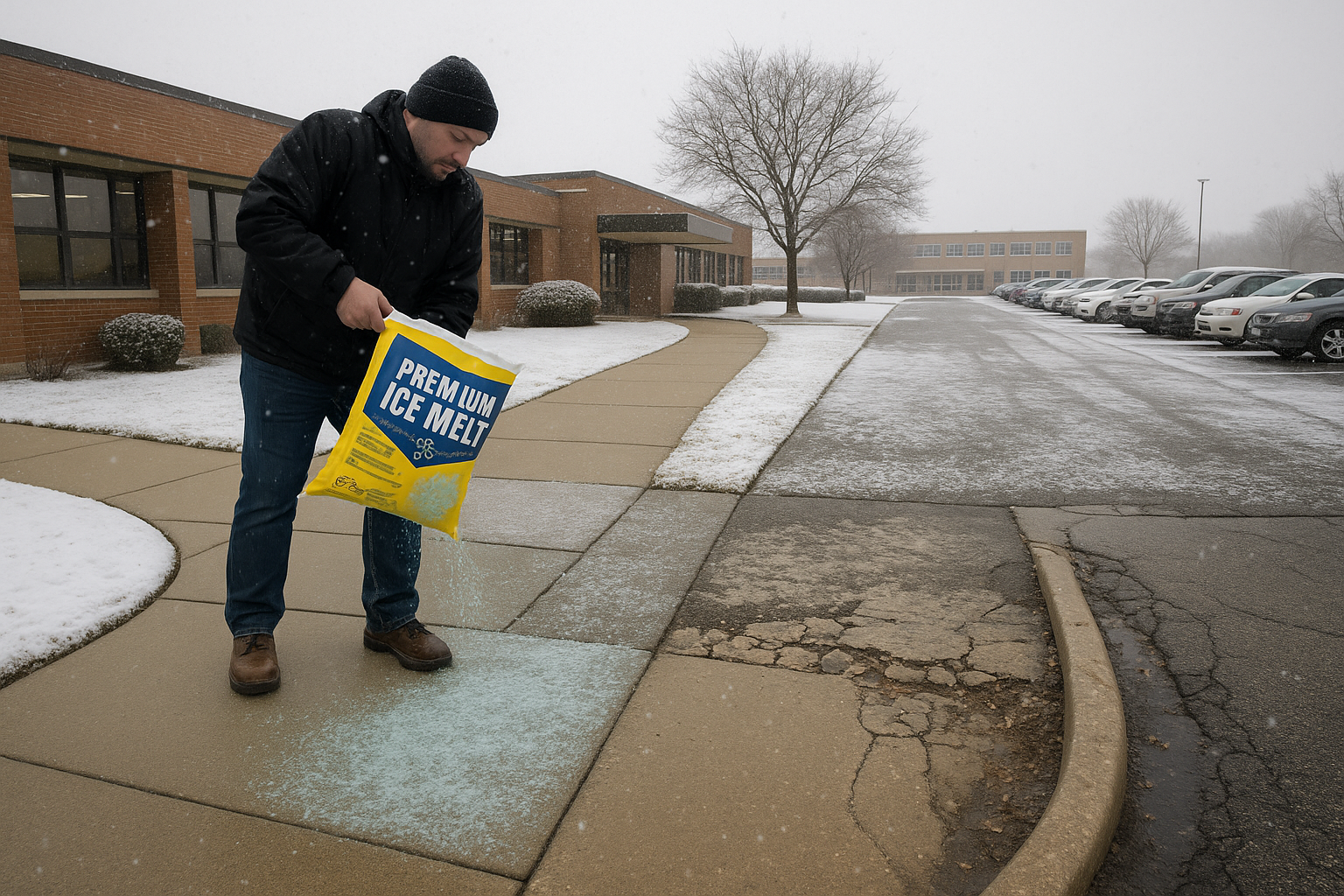Proper Application of Ice Melt to Avoid Frequent Resurfacing

Applying ice melt correctly is key to maintaining safe, ice-free surfaces throughout winter without the need for constant resurfacing. Using the right techniques ensures effective melting while reducing the frequency of application. Here’s a guide to applying ice melt properly and avoiding unnecessary resurfacing:
1. Choose the Right Ice Melt
Different ice melts have varying properties and effectiveness depending on temperature and surface type. Select an ice melt suited for your specific conditions:
- Sodium Chloride (Rock Salt): Effective above 20°F (-6°C), economical, but can be harsh on surfaces.
- Calcium Chloride: Works at lower temperatures, down to -25°F (-32°C), and is less damaging to surfaces.
- Magnesium Chloride: Effective at low temperatures, less corrosive, and environmentally friendly.
- Liquid Ice Melt: Liquid Ice Melt is a powerful de-icing solution designed to quickly and effectively melt ice and snow on various surfaces. Its advanced formula works at low temperatures, ensuring safer and more efficient ice removal in cold conditions.
Warehouse Direct offers a range of products tailored to various facility types and conditions.
2. Prepare the Surface
Before applying ice melt, ensure the surface is clean and free of debris:
- Shovel Snow: Remove as much snow and ice as possible with a shovel or snow blower. Ice melt is more effective on bare ice or snow than on heavy snowdrifts.
- Clear Debris: Ensure there are no leaves, dirt, or other debris on the surface, as these can block the ice melt from making full contact with the ice.
3. Apply Ice Melt Evenly
Proper application is crucial for effective ice melting and to avoid the need for frequent resurfacing:
- Spread Evenly: Use a spreader for large areas or apply by hand in smaller areas. Aim for a uniform layer, avoiding clumping which can lead to uneven melting.
- Follow Instructions: Adhere to the manufacturer’s recommended amount. Overapplication can be wasteful and less effective, while underapplication may not adequately address the ice.
4. Apply at the Right Time
Timing plays a significant role in the effectiveness of ice melt:
- Pre-Treatment: For heavy snowfall or anticipated ice, applying ice melt before the event can help prevent ice from bonding strongly to surfaces, making it easier to remove later.
- Post-Snowfall: Apply after snow or ice accumulation to break up and melt existing ice. The earlier you treat it, the easier it will be to manage.
5. Monitor and Reapply as Needed
-Check the Surface: Regularly check the treated areas to assess the effectiveness. If ice starts to build up again, apply a small amount of ice melt to maintain traction and safety.
- Avoid Overuse: Reapply ice melt only when necessary to avoid wastage and excessive buildup.
6. Clean Up Residue
After the ice has melted:
- Sweep Residue: Remove any leftover ice melt crystals to prevent damage to surfaces and reduce environmental impact.
- Flush with Water: If possible, lightly rinse the area with water to clear residual salts, especially on sensitive surfaces like concrete or asphalt.
Applying ice melt correctly is essential to ensuring effective ice management and avoiding the need for frequent resurfacing. By choosing the right product, preparing the surface, applying evenly, timing your application, and monitoring results, you can maintain safe, slip-free conditions with minimal hassle. Warehouse Direct offers expert guidance and a variety of ice melt solutions to help you manage winter conditions efficiently and effectively. Contact us today to get started!

